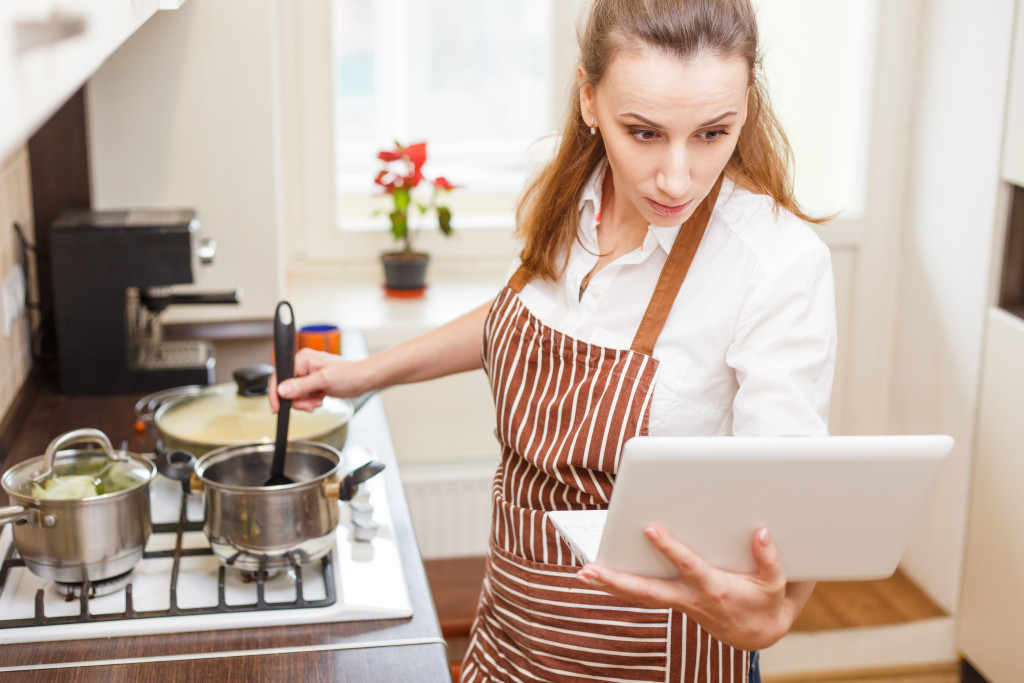Have you ever heard of culinary art therapy? It’s a form of expressive art therapy that utilizes food as a medium for expressing emotions and promoting mental health. While it is pretty effective, it can also be quite intimidating. Where do you even start? What kind of supplies do you need? Don’t worry; here are simple tips to get you started with culinary art therapy at home!
Set up your space.
The first step to beginning culinary art therapy is creating a comfortable and inviting workspace. Make sure the area has plenty of natural light and enough room to move comfortably around the kitchen.
Consider adding decorations such as plants or pictures that make you feel relaxed. For example, you can look into quality stone countertop installation to add more flair and functionality to your space. A stone countertop is especially useful because it reduces the risk of marks and is easy to clean.
Remember that your kitchen should be something that inspires creativity, so feel free to add some unique touches! You can even hang colorful towels, aprons, and oven mitts to make the area more cheerful.
Gather supplies.
You don’t need a lot of fancy equipment for culinary art therapy. All you really need are basic kitchen items such as utensils, cookware, and ingredients.
If possible, try to find organic ingredients from local vendors to support sustainable practices while getting the freshest produce. These can include vegetables, fruits, grains, and herbs. In some cases, you’d also stock up on dairy items such as cheese, butter, and yogurt. Additionally, you can include condiments like olive oil, vinegar, and salt to add flavor to your dishes.
In addition to the ingredients, you’ll also need basic kitchen equipment such as knives, cutting boards, pots and pans, whisks, graters, food processors, or mixers, if possible. A few specialty items like fondant tools or decorating kits can also be helpful if you plan on baking cakes or cupcakes during your sessions. Make sure all of your equipment is in good condition and easy to use before starting your sessions.
Experiment with recipes.
The key ingredient in any successful culinary art therapy session is experimentation! Try out different recipes and techniques to see what works best for you and what brings out your creative side most effectively.
Be sure to document each recipe so that you can look back on them later and see how far your skills have come over time! For starters, try something simple like a stir fry or soup.
Once you’ve mastered the basics, move on to more complicated dishes such as sushi, pastries, and pizza. As you explore different recipes and techniques, your cooking skills will improve significantly!
Take classes.
If you want to improve your culinary art therapy skills, consider taking classes from experienced instructors who specialize in this field. Many local cooking schools offer specialized classes specifically catered towards individuals interested in exploring their creative side through food preparation and presentation techniques!
For example, you can take a class on preparing sushi or creating beautiful cakes and cupcakes for special occasions. Taking classes provides you with valuable skills and helps you connect with other people in your community who share the same passion as you.
Furthermore, classes can provide an outlet to practice your craft and gain feedback from professional chefs who can help you hone in on perfecting your recipes.
Find an accountability buddy.
Finally, find someone who will hold you accountable for staying consistent with your practice (and eating!) during sessions of culinary art therapy! Having someone else who understands the process can help motivate you when things get tough and remind you why it’s important to keep going even when things get difficult — which they inevitably will at times!
For instance, you can both plan meals together and take turns cooking for each other or have weekly check-ins to reflect on progress. Having someone else to hold you accountable and provide support will help keep you motivated and focused on your goals!
Moreover, you’ll have someone to share your successes with, which is an invaluable part of the culinary art therapy journey! Whenever possible, try to find a person who shares the same enthusiasm and passion for food that you do, as they’ll be best suited to understand your journey.
Culinary art therapy is an incredibly powerful way to express yourself creatively while nourishing your body and mind simultaneously! With these simple tips, anyone can start exploring this amazing form of self-care right away in their home. So grab some friends, gather up some supplies, pick out a recipe…and get cooking!

